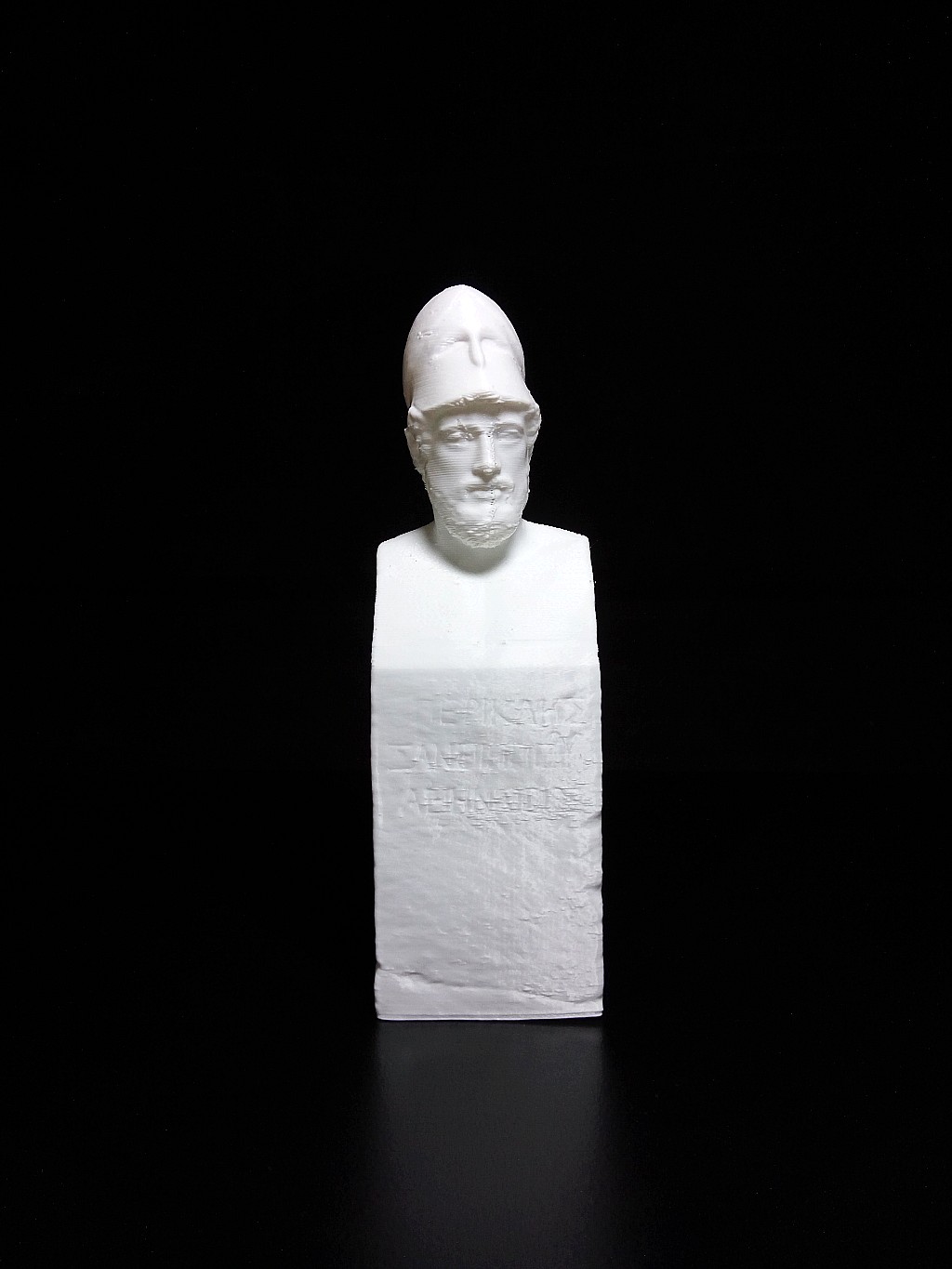
Herm of Pericles
myminifactory
The Hero of Antiquity We all know the importance of Pericles, a renowned general who has achieved numerous victories in his illustrious past. Now it's time to focus on who he was and what he did during his life, and let's examine this statue for clues. Who is Depicted? Pericles (pronounced /ˈpɛrɪkliːz/; Greek: Περικλῆς Periklēs, [pe.ri.klɛ̂ːs] in Classical Attic) was a prominent and influential statesman, orator, and general of Athens during the Golden Age, specifically between the Persian and Peloponnesian wars. He came from the powerful Alcmaeonid family through his mother. Pericles had such a profound impact on Athenian society that Thucydides, a contemporary historian, hailed him as "the first citizen of Athens." Pericles transformed the Delian League into an Athenian empire and led his countrymen during the first two years of the Peloponnesian War. The period he led Athens, roughly from 461 to 429 BC, is sometimes known as the "Age of Pericles," although this term can encompass times as early as the Persian Wars or as late as the next century. Pericles promoted arts and literature; it's mainly due to his efforts that Athens holds the reputation of being the educational and cultural center of the ancient Greek world. He started a massive project that generated most of the surviving structures on the Acropolis, including the Parthenon. This project beautified and protected the city, showcased its glory, and provided work for the people. Pericles also fostered Athenian democracy to such an extent that critics call him a populist. Technical/Specification about the Statue A bust is a sculpted or cast representation of the upper part of the human figure, depicting a person's head and neck, and a variable portion of the chest and shoulders. The piece is normally supported by a plinth. These forms recreate the likeness of an individual. They can be made from any medium used for sculpture, such as marble, bronze, terracotta, or wood. A parallel term, aust, is a representation of the upper part of an animal or mythical creature. Sculptural portrait heads from classical antiquity are sometimes displayed as busts. However, these are often fragments from full-body statues, or were created to be inserted into an existing body. More about the Artist Kresilas (Greek: Κρησίλας Krēsílas; c. 480 – c. 410 BC) was a Greek sculptor in the Classical period (5th century BC), from Kydonia. He was trained in Argos and then worked in Athens at the time of the Peloponnesian war, as a follower of the idealistic portraiture of Myron. He is best known for his statue Pericles with the Corinthian helmet. Kresilas hailed from the city-state of Kydonia, on the island of Crete. He was trained in Argos as a student of Dorotheos, with whom he worked at Delphi and Hermione. Between 450 and 420 BC, he worked mainly in Athens, as a follower of Myron's school and in the post-Phidias period, he brought elements of compactness due to the Peloponnesian period. Roman writer Pliny the Elder wrote about a competition between the four sculptors Polykleitos, Phidias, Kresilas, and Phradmon, on the best statues of Amazons for the Temple of Artemis at Ephesus. Each sculptor placed himself first, but Phidias, Kresilas, and Phradmon had all put Polykleitos second, thus, Polykleitos won, Pheidias came second, and Kresilas third.
With this file you will be able to print Herm of Pericles with your 3D printer. Click on the button and save the file on your computer to work, edit or customize your design. You can also find more 3D designs for printers on Herm of Pericles.
